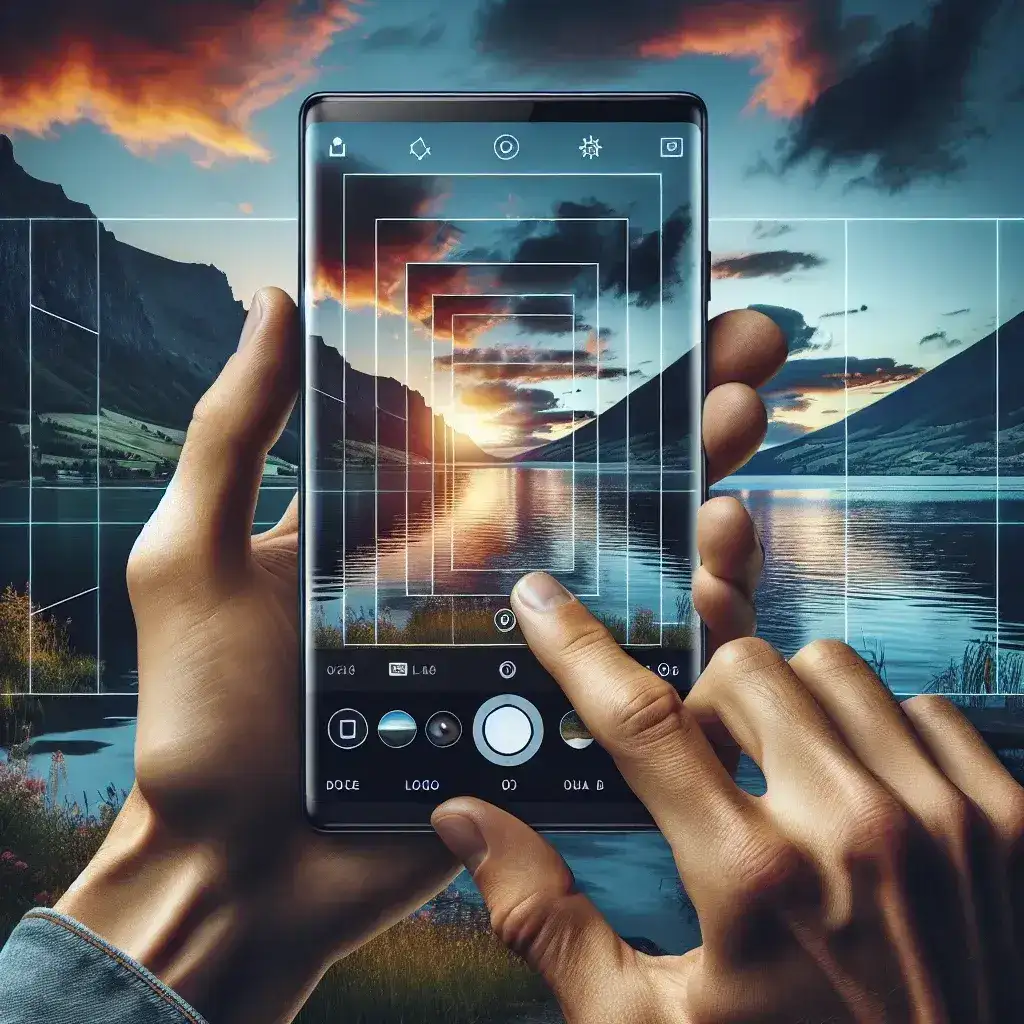Master the Basics of Composition
Whether you\’re using an iPhone or an Android device, understanding the fundamentals of composition is key to capturing great photos. The rule of thirds is an essential concept to start with. Imagine your frame is divided into nine equal sections by two vertical and two horizontal lines. Place your subject along these lines or at their intersections to create a balanced and pleasing image.
Use Leading Lines
Leading lines guide the viewer\’s eye through your photo and toward the subject. These could be roads, paths, rivers, or even architectural elements. Incorporate these lines effectively to add depth and dimension to your shots.
Frame Your Shots
Framing involves using elements within your scene to create a ‘frame’ around your subject. This might be natural elements like trees or man-made structures like doorways and windows. Framing adds layers and context to your photos, making them more engaging.
Optimize Lighting
Lighting is crucial in photography, and natural light often yields the best results. Aim to shoot during the ‘golden hours’—shortly after sunrise and just before sunset—when the light is soft and diffused. Avoid harsh midday light, which can create unwanted shadows and highlights.
Find the Right Angle
The angle from which you shoot can dramatically impact the outcome of your photo. Experiment with different perspectives—shoot from a high angle for a comprehensive view or a low angle to make your subject appear more powerful. Changing your angle can also help you find the best light and avoid unwanted shadows.
Utilize Your Smartphone\’s Features
Modern smartphones come equipped with a plethora of features designed to enhance your photography. Familiarize yourself with these features to take full advantage of them.
Pro Mode
Many smartphones offer a ‘Pro Mode’ or ‘Manual Mode’ that allows you to adjust settings like ISO, shutter speed, and white balance. Experiment with these settings to gain greater control over your photos and capture exactly what you envision.
HDR Mode
High Dynamic Range (HDR) mode combines multiple exposures to produce a single image with balanced lighting. This feature is particularly useful in high-contrast scenes, ensuring that both the brightest and darkest parts of your image are well-exposed.
Use Gridlines
Enable gridlines on your camera screen to aid in composition, particularly when following the rule of thirds. This simple tool can help you align horizons and architectural elements accurately.
Edit for Perfection
Post-processing is where your photos can truly shine. A well-edited photo can elevate an already good shot to a professional level.
Basic Adjustments
Start with basic adjustments like exposure, contrast, and saturation. Most smartphones come with built-in editing software that allows you to tweak these settings. Increase contrast for a more dynamic look, or brighten the exposure to lift shadows.
Advanced Editing Apps
For more advanced editing, consider apps like Adobe Lightroom, Snapseed, or VSCO. These apps offer a wide range of tools for color correction, retouching, and even adding filters to give your photos a unique style.
Practice and Experiment
The best way to improve your photography skills is through constant practice and experimentation. Don\’t be afraid to try new techniques or to take multiple shots of the same subject from different angles and under varying lighting conditions. Review your shots and learn from each session.
Join a Photography Community
Consider joining online photography communities or local clubs. Sharing your work and receiving constructive feedback can provide valuable insights and inspire you to refine your skills further.
Invest in Accessories
While smartphones are capable on their own, certain accessories can take your photography to the next level.
Lenses
Clip-on lenses, such as macro, wide-angle, or telephoto lenses, can expand the creative possibilities of your smartphone camera.
Tripods and Stabilizers
A small tripod or a stabilizer can help you take steady shots and long exposures, especially in low-light conditions.
External Lighting
Portable lighting options, like LED rings or panels, can provide additional light sources for more controlled and better-lit photos.
By mastering these techniques and utilizing the features and accessories available, you can achieve pro-level shots with your smartphone. Don\’t forget to practice regularly and keep exploring new methods to continuously improve your skills.

